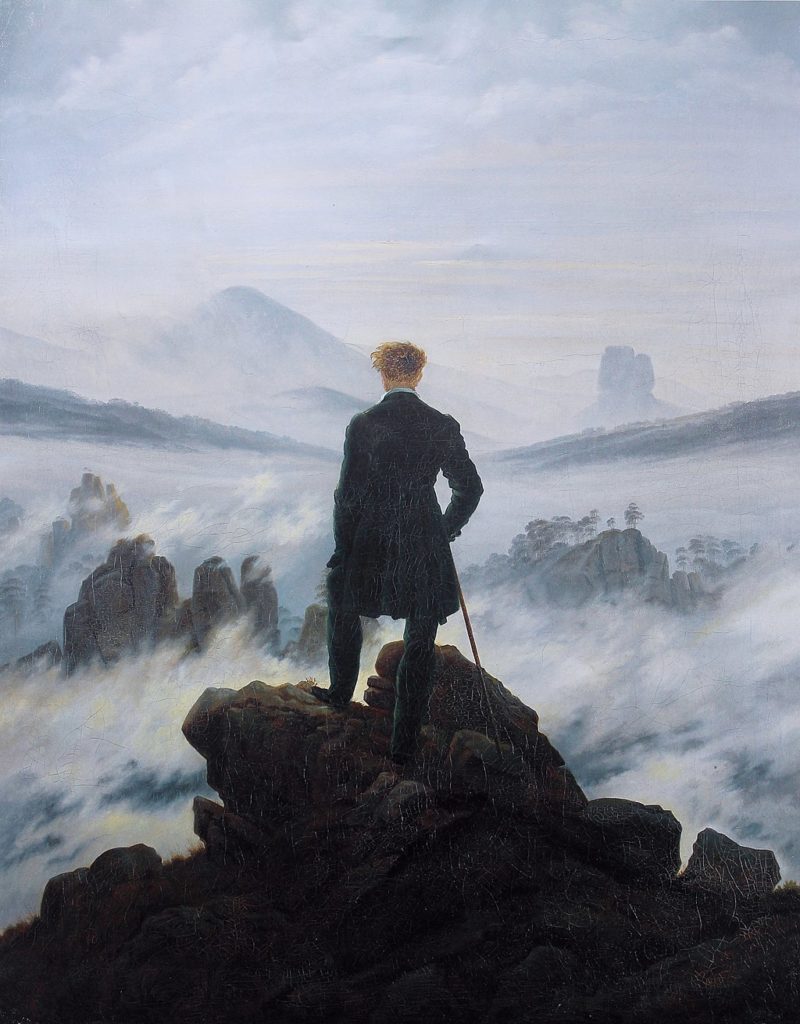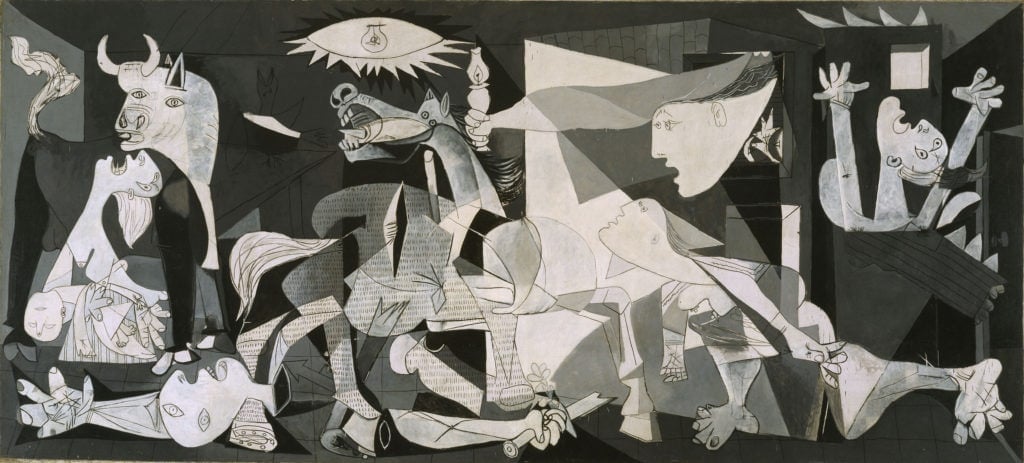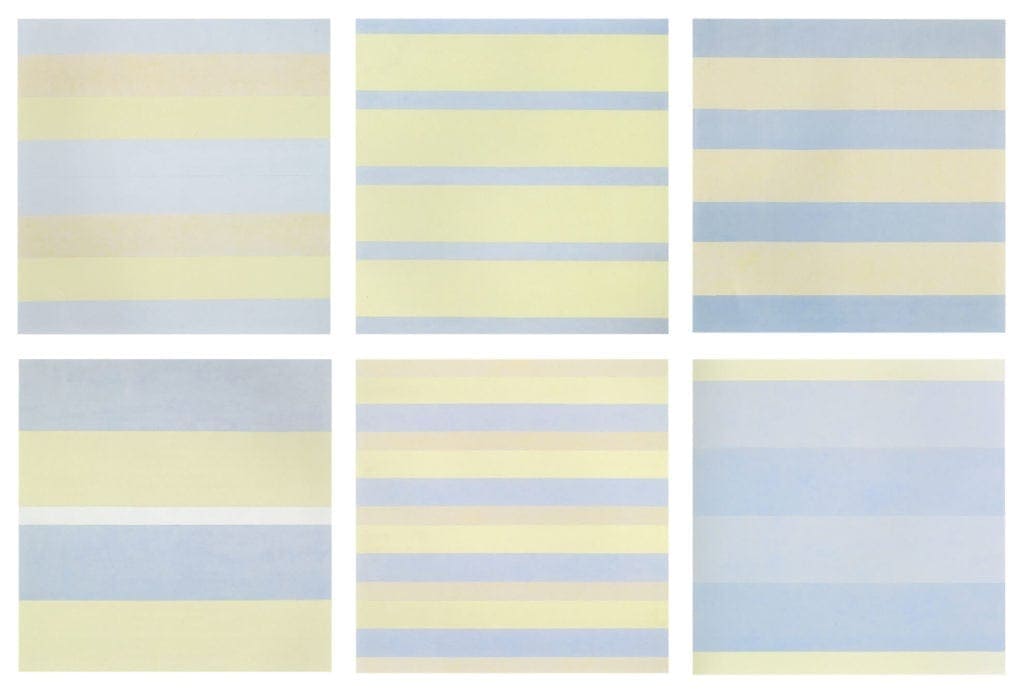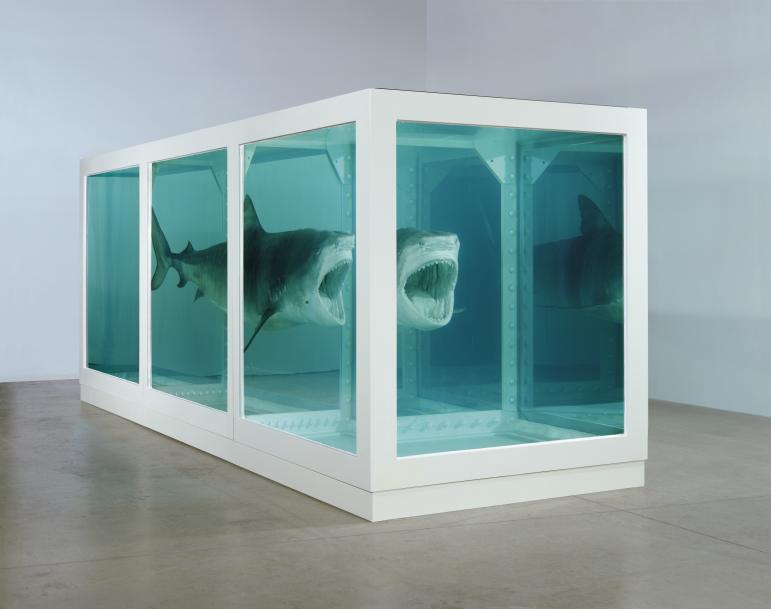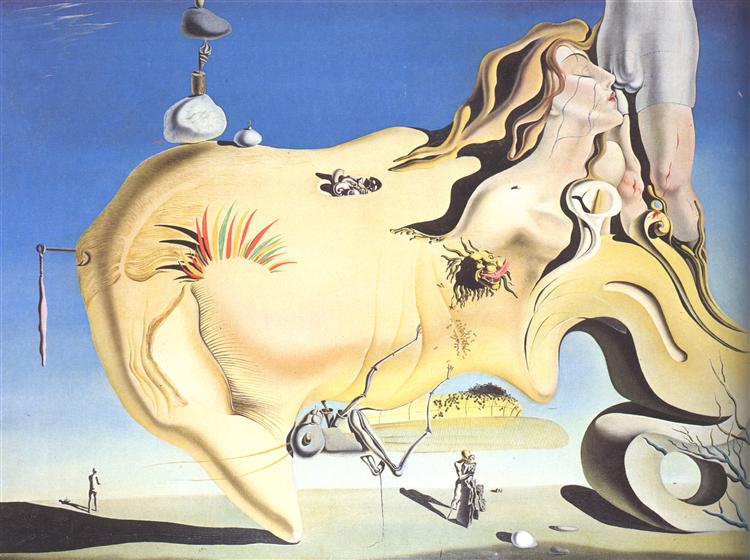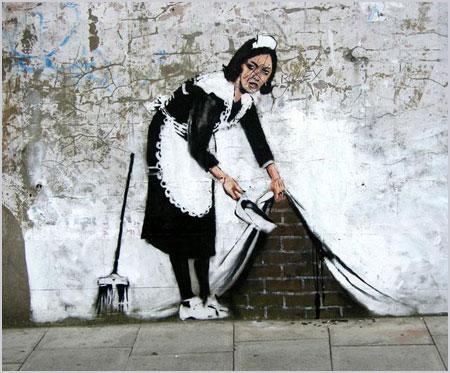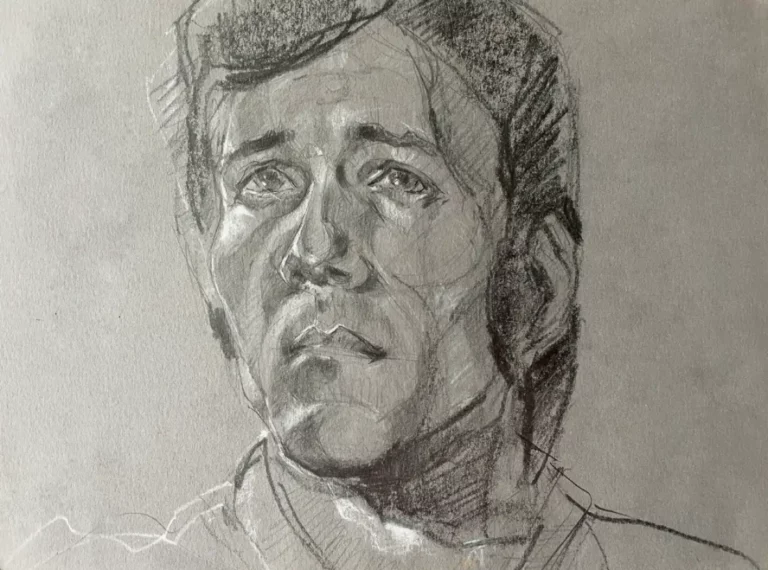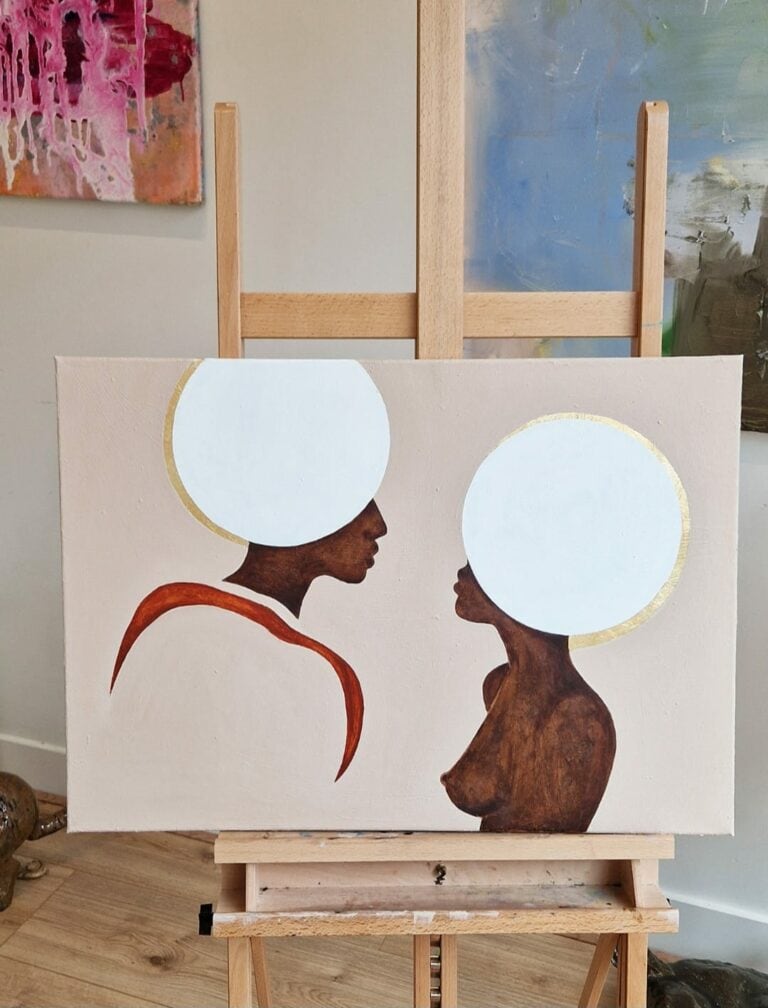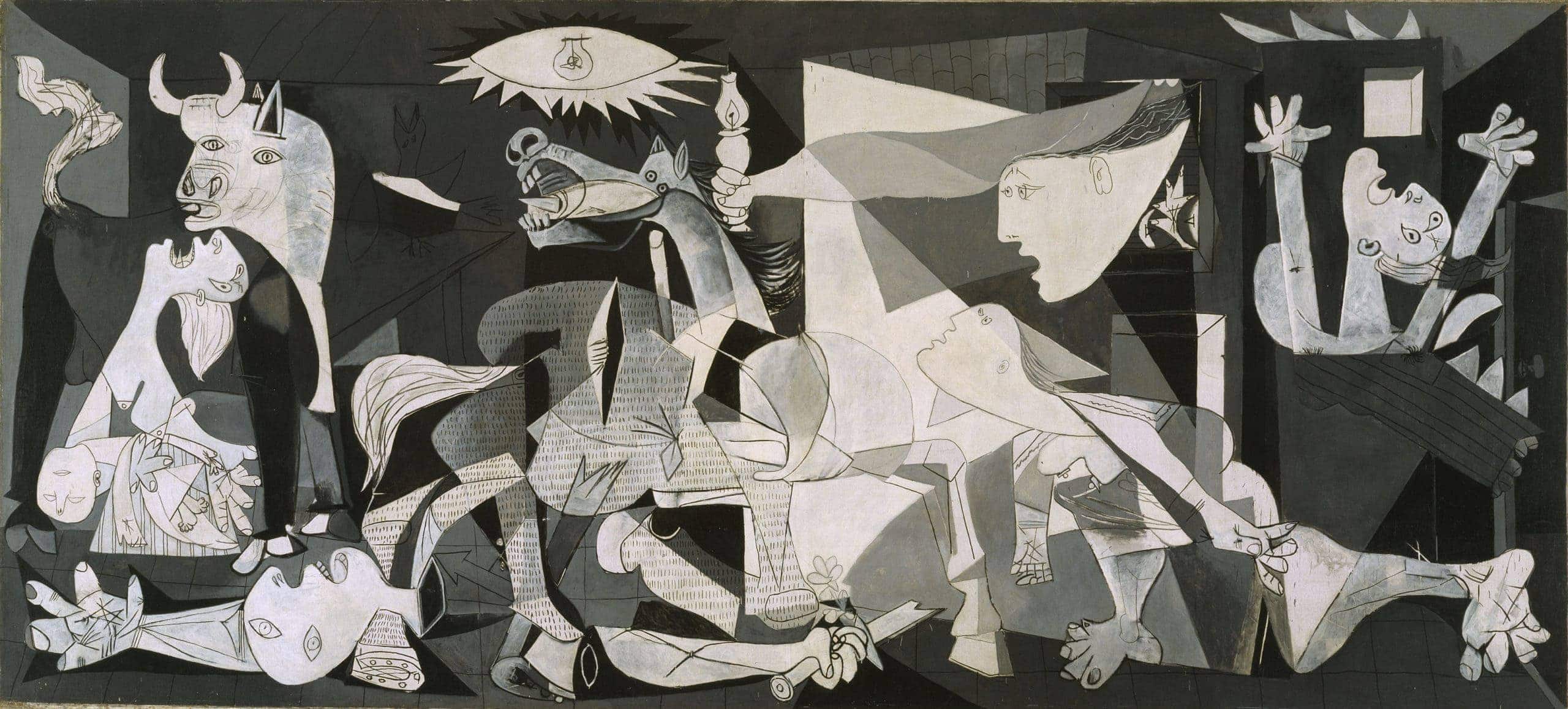
29 April 2021
Contemporary Art
“Modern art to me is nothing more than the expression of contemporary aims of the age that we’re living in.” Jackson Pollock (1912-1956)
Here is a controversial issue par excellence: what is contemporary art? If we analyze the literal meaning of the nomenclature we can understand that the qualifier is inherent to the art of all times. That is, any artistic production, of any period, will always be “contemporary” for those who coincide in the same time period. In keeping with Pollock’s thinking, contemporary art is one that responds to the cultural consciousness of the moment, to its society, to joint needs, to the spirit of the time.
In this quasi-arrogant claim that invades theorists to explain and recreate formulas for social behavior, we find ourselves with a contemporaneity that increasingly expands its capacities for expression and analysis tools. That is why the concept of “contemporary art” itself has the fascinating quality of emerging over and over again as a topic of discussion, it is immortalized in the face of its constant demand for updating, and it will always appear new.
Before starting to speculate on “what is art in our contemporary world”, first let us make the pertinent caveats since this article does not intend to establish a lecture on the subject, but rather to bring a series of approaches that invite the reader to reflect and find out more about it. Let’s start from recognizing that there is a great diversity of opinions on the origin and semantics of the concept of “contemporary art”, and we understand that this particularity often generates frustration in the public that expects a unique and absolute way of defining and interpreting it.
Historical Criteria for locating a work as Contemporary Art
For us, the inhabitants of the 21st century, the term is used more frequently to refer to the set of artistic expressions that emerged in the West -later, the development of communications will gradually include the rest of the planet- from the end of the century XVIII. It is always associated with the concepts of “revolution” and “breaking of canons“. For scholars of the subject, there are three criteria that make it possible to determine from what moment to call the artistic productions of our time as “contemporary”. These criteria are: art and contemporary age; contemporary art and avant-garde; and contemporary and postmodern art.
Within the first paradigm is the art that coincides with what historians define as the beginning of the Contemporary Age: the French Revolution (1789-1799). The art of this historical period is called Romanticism, and the ideology of this style was identified with sentimentality, subjectivity, the search for individuality and freedom.
Wanderer above the Mist, by Caspar David Friedrich, c. 1818, oil on canvas
For the second criterion, the manifestations that emerged at the beginning of the 20th century, known today as Historical Artistic Vanguards or Historical Artistic Avant-Garde, will be considered as contemporary art, among which are Dadaism, Fauvism, Expressionism, Cubism, Futurism, Neoplasticism and Surrealism. These avant-garde trends were distinguished by presenting a series of common elements in their ideology, but not in the stylistic. Conceptually they started from the interest to innovate and grant art a place very different from the one it had before.
Guernica, by Pablo Picasso, c. 1937, (Cubism) oil on canvas
Through ideas and positions that broke with traditional models, the artists of these movements questioned and transcended the institution of art, achieving consolidation due to its critical and transgressive nature. The avant-garde artists of this stage also have a group conscience and this is reflected in their manifestos. They no longer seek to imitate reality, but to interpret it through new expressive languages. That is why they begin to experiment with color, shapes, and composition, revaluing the meaning and impact of visual expressive media.
However, the passage of time, the overcoming of models and norms, the emergence of new means for communication, implies a constant review of what categories such as: classic, modern, or avant-garde represent. In the light of the third decade of the 21st century, the so-called Historical Artistic Vanguards and their manifestos, which were so “revolutionary” in their time, seem less and less novel and come closer to accompanying the gallery of “classic styles”. One hundred years have passed since the first avant-garde emergence, and many of these movements, such as Cubism -for example-, currently do not develop in groups of authors with similar ideologies, or in themselves they have not evolved, so under the 21st century optics do not propose anything new or avant-garde. We must understand the terms in context.
We then come to the third classification criterion for contemporary art, the one that begins after the Second World War, the beginning of Postmodernity, which is usually located between the end of the 60s and the beginning of the 70s of the last century. From this moment on, a “second avant-garde wave of the century” can be identified, made up of movements such as pop art, new French realism, conceptual art, minimalism, arte povera, abstract expressionism, hyperrealism, neo-figuration, installations, deconstruction, urban art, photography, digital art, among others.
With my Back to the World series,by Agnes Martin, c. 1997
What is Contemporary Art?
In an attempt to generalize characteristics, we could say that in contemporary art various trends, styles, concepts and manifestos coexist, in groups and individually; It is also multidisciplinary, hence its versatility makes it such a complex and controversial scenario. Contemporary art has meant a change in paradigms, languages and strategies. It is no longer aspired to illustrate or the simple representation of the canons of classical beauty, it is not the perspective, or the search for proportion, harmony and symmetry what determines its sufficiency. Modern art breaks with the iconography and symbology of traditional rhetoric, which is very useful to interpret classical art, and that is why many times it is a challenge for the viewer to decode a contemporary piece of art and frequently wonder what its meaning is.
At this point, let’s analyze two fundamental aspects that help to understand art in any age: technique and artistic concept. Let us understand that these elements in turn are closely related, since the technique will depend on the concept or purpose of the art. In the Baroque and Renaissance styles, for example, there are not many differences in terms of themes and dynamics around art, the purpose and concept of what the artist is. We then find that, perhaps the main characteristic that defines or marks a before and after of the art of the so-called “avant-gardes”, is the impulse to resize the purpose and role of art and the artist: the transition from artisan to artist.
The contemporary creator wants to say something, he wants to break, and baste a discourse of social, political and systemic impact. If before the avant-garde, the artists pleased the patron (be it a person or institution) and inevitably expressed in it their particular way of approaching a certain theme, the contemporary artist makes his individuality and internal world the theme of his work. Contemporary art transcends the mere decorative or educational function, and starts from dissatisfaction, restlessness, and curiosity, channeled in the most diverse directions and themes.
We have seen how the movements of rupture and rejection have marked the common thread of art history, and how the official legitimizing institutions and other protective hierarchies of art determined to a large extent, and in a monopolized way, what art was. The artists, for their part, have been divided between those who subscribe to the rules and those who confront them, the latter being the ones who generated and consolidated new styles and practices. Those groups that maintained their reactionary and isolated stance before the establishment finally managed to take over the institutions.
The Physical Impossibility of Death in the Mind of Someone Living, by Damien Hirst, c. 1991
However, since the last decades of the 20th century, even more significant changes have been observed in the behavior of all the factors that make up the art universe. The legitimizing structures, as well as the artists and the public have been making certain attitudes and postures more flexible, conditioned by economic, technological and generational factors, adjusting to the dynamics of modern society, and this has undoubtedly radically influenced the way of conceiving and understanding contemporary art.
The contemporary artist as an artistic product
From the field of sociology, the new projections that the contemporary artist establishes with art can be analyzed, outlining the creative activity in itself as an artwork, and which in turn establishes the author, the process and the catalog, everything as a whole, as an artistic product. These are dynamic, complex and unprecedented relationships where the artist is frequently defined by a multidisciplinary activity, although he maintains his specialization in certain profiles. In this unlikely phenomenon we will find the role of the producer, who would sometimes end up being a kind of co-author as well. The case of the Spanish artist Salvador Dalí (1904-1989) serves to illustrate the above.
The Great Masturbator, by Salvador Dalí, c.1929, (Surrealism) oil on canvas
We will also have in this transgressive context the self-managed artist who dominates and manipulates the codes of dissemination and commercialization of art. From these positions, new forms of creativity are generated that go beyond the margin of traditional artistic creation, by also actively including the public in said production. The figure of the author is unfolded and sometimes blurred. The artist can place himself in an intermediate position between commercial production and cultural value, or he can lean to one of these extremes without abusing the limits. So the contemporary artist is defined by the position he takes on these edges, and in terms of social commitment.
The message and technique in Contemporary Art
For contemporary artists the message is the most important thing, and the technique or resources in themselves would not define the value of that message or of the artwork. Preciousism or technical virtuosity will be admired in contemporary art almost exclusively by those followers of hyperrealism. In this panorama, the new modern artists turn to culture, cinematographic language, advertising, journalism, everything that surrounds them, as a toolbox with which to “use” the world and create complexes of meanings.
Within conceptual art, one of the most controversial trends, we have seen artists like Félix González-Torres (1957-1996) conceive true masterpieces, of great sensitivity, with materials for domestic and similar purposes. Although it is true that the artist is a character with an acute intelligence to tackle complex issues, there is a delicate fringe within the freedom of contemporary art, and specifically of conceptual art, where sometimes the idea itself is revered, and the exclusivity of “copyright” is abused, while the way of expressing this idea sometimes resorts to simplicity, suggesting that the mere act of thinking could be exclusive and a sufficient excuse to turn someone into an artist, or a thought in art.
Untitled (Perfect Lovers), by Félix González-Torres, c. 1991
Modern Art: The art of the misunderstood?
All this deconstruction of the rhetoric of art means that the art of our day is absolute freedom of expression and absolute freedom of interpretation. We will find free will and barriers coexisting with contemporary production, which many viewers cannot access in terms of understanding and identification. Sometimes we will see the artist proclaim himself and call himself as such, and other times he is only interested in connecting with a very specific audience. This creator positions himself on a level of intellectual superiority by recognizing himself as a being who poses existentialist, philosophical or political problems and conflicts, and who is capable of expressing those questions in a metaphorical way, regardless of the quality or aesthetic interest of said “metaphor ”. So, he isolates himself in his individuality, takes absolute control of his creation by showing himself as a critic and judge of his own work and the world: “my art is not for everyone” or “I am misunderstood by my time” .
However, the role of the public in contemporary art is much more active and versatile, constituting one of the most radical changes in the contemporary art equation. The operating dynamics of modern society promote a spontaneous and reciprocal interaction between the creator and the consumer, allowing the creator to be also a consumer and vice versa. At the same time, we will see that this approach will facilitate that the general public, the population, is now also a legitimator of art, and not only institutions such as museums, galleries, and other sponsors among which are critics, collectors, dealers and nouveau riche. We are facing a new communication system that empowers communities, neighborhoods, a market sector, a social class or a socio-cultural region, to determine who is an artist. This phenomenon for the creator represents the possibility of defining his own audience and maintaining direct contact with it, either physically or virtually.
Art is a chronicle of its time
Theorist Jacob Burckhardt, understood art and other human productions as a link in the history of culture. Burckhardt held that the art of each period is the most complete expression of the spirit in which it is produced, not alien to religion, the state, or the interests of capital. Everything influences its manifestations, thus being co-responsible for the development of the history itself. From the great economic crises, we have seen contemporary artists take an active role in favor of art and their own existence, establishing skillful self-promotion strategies that have been consolidating over the last decades. In this way, elements of marketing, advertising and the media have been incorporated into the art system, with the aim of generating social controversy, and sometimes excessive media attention on their artistic proposals, even reaching that many artists control their own market.
On the other hand, in his work The Third Wave, the sociologist Alvin Toffler, emphasizes how technology platforms and prosumers (consumers who also act as producers) have displaced advertising and traditional media (radio and tv) around consumer habits. This also applies to art, artists, their public, and legitimizing institutions. The Internet has allowed a new form of collective art, challenging aesthetic, semiotic and authorial concepts. During the 20th century, art surrendered its authorship, first to the unconscious, then to polyautoral groups, now we see this trend in a collective art. The Internet, like any other technology in the hands of human beings, admits from the brilliant and sophisticated to the banal and random, but in any case it is indisputably creative. However, the artist runs the risk of falling into the error of past generations who, being seduced by the exploration of the new media, allowed themselves to be defined by them, instead of allowing poetic evocations that would become creations of substantial content and autonomous.
Sweep it Under the Carpet, by Banksy
As Oscar Wilde once said: “to define is to limit”, and sometimes trying to qualify whether a certain contemporary work is art or not can be a high-risk exercise due to the discussions it can generate. It is quite common in our days to find artists who manage to impose themselves despite bad criticism, by mastering the codes of the modern operating mechanisms of the Art System and its marked mercantile and speculative nature. The most effective tool to distinguish between art and crafts, or between artistic prestige and commercial prestige, will always be knowledge, and the passage of time will validate the solidity of a artwork as it can be reread for several generations. Then, the invitation is made so that all this subjectivity does not deprive us of enjoying the experience and the challenge that contemporary art is for our minds.
Related Posts
Art Events
Bloom into Spring with our Flower Press Ceramics Workshop
Discover the beauty of flower-pressed ceramics in this hands-on workshop! Over two captivating hours, you'll learn to create a unique hand-built plate using dried blooms and other natural elements. Whether you're a beginner or seasoned artist, Lorena will guide you step-by-step as you explore this enchanting decorative technique.
Art Events
Portrait Drawing Masterclass: explore lines, shapes and expression
I’ll guide you through some basics of creating a portrait using pencil and some other additional materials. What is really important for you to learn is to observe and pay attention while drawing someone’s portrait. As an academically trained painter I spent countless hours improving my portrait drawing skills, which I will be very happy to share with you. Knowledge has no meaning, if it’s no shared.
Art
That’s Life – Annet van Belkom
In her newest series, That’s Life, Annet draws inspiration from the song ‘That’s Life’ by ‘Scorz’ to express the idea of life happening in cycles. The introduction of the electronic music track is accompanied by a beautiful story about life and reflects on the idea of who we are as humans and the continuity of […]




